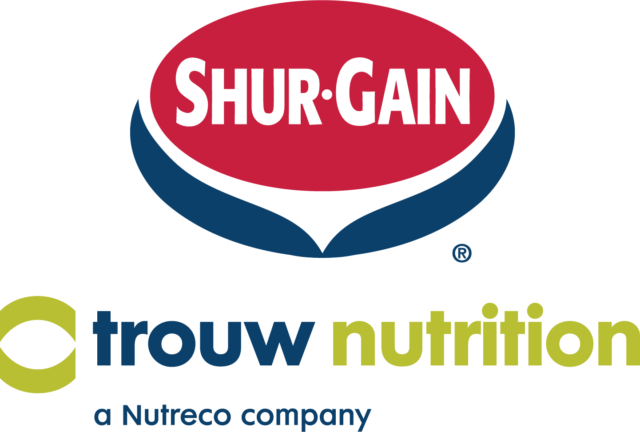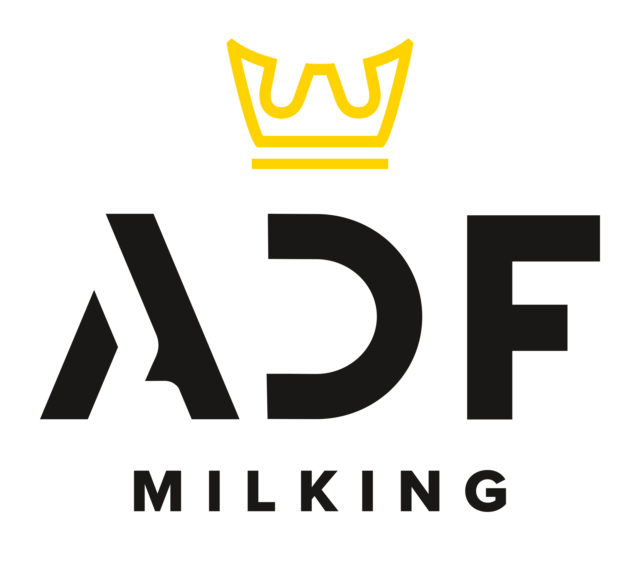To read this article in French, click here.
There’s no question that we live in a rapidly changing world. Technology continues to evolve at a feverish pace, which shapes the way in which people live, work and do business. This dynamic plays out across all trades and within the dairy industry as well. Each year I attend numerous industry trade shows and meetings, filled with new products and technologies to admire. While I think the dairy industry should be recognized for its continuous improvements and achievements in using technology to improve efficiency of daily operations, we should also at times take a step back and exercise caution. While new innovations may bring great advantages and progress, they may also introduce headache and negative impacts if not properly tested and supported by data. The U.S. dairy industry is the top producer of cow milk in the world, with arguably some of the highest quality. What have we learned in the last 50-plus years of dairy farming, and when should we exercise caution about embracing change?
The U.S. dairy industry today is milking 6% fewer cows, on 80% fewer farms, but producing 51% more milk than it did only 30 years ago. Also during that time, the average bulk tank somatic cell count (BTSCC) has dropped 42% from about 295,000 cells per milliliter (cells/mL) to 172,000 cells/mL, despite the U.S. still having one of the highest legal BTSCC limits globally (750,000 cells/mL). Much of the improvement is due to greatly reduced prevalence of contagious mastitis, milking-time hygiene and the manner in which cows are milked today. Yet both contagious and environmental mastitis still plague the industry, and mastitis remains the most costly animal health disease. Clearly we have not solved the problem of mastitis and the risk it poses to milk quality. While it is tempting to look to the latest sensors, supplements, on-farm tests or other technologies to hit the market to resolve this problem, let’s take a step back and review what we have learned and know to be true about mastitis control.
Though the dairy industry has changed significantly over the last several decades, the basic premise of contagious mastitis control has not. Historically, the three primary contagious pathogens of concern have been Staphylococcus aureus, Streptococcus agalactiae and mycoplasma. Today, prevalence of S. agalactiae is very low largely thanks to effective dry cow intramammary antibiotics, but S. aureus and mycoplasma are still present in nearly all dairies at one point or another and are capable of causing extremely expensive and damaging outbreaks. What do we know about these bugs and what is the best approach to controlling and preventing them?
-
Don't overcomplicate
- The greatest place of risk for contagious mastitis is cow-to-cow transmission at milking time. These bugs do not survive well in the environment outside of the cow. Milk residue on milking machine liners, milkers’ hands, shared cannulas or teat dilators, reused towels and improperly maintained teat scrubbers all make excellent vehicles for transmission of contagious mastitis. Focus on good milking procedure and hygiene; don’t waste time chasing obscure environmental sources for S. aureus or mycoplasma.
- The greatest place of risk for contagious mastitis is cow-to-cow transmission at milking time. These bugs do not survive well in the environment outside of the cow. Milk residue on milking machine liners, milkers’ hands, shared cannulas or teat dilators, reused towels and improperly maintained teat scrubbers all make excellent vehicles for transmission of contagious mastitis. Focus on good milking procedure and hygiene; don’t waste time chasing obscure environmental sources for S. aureus or mycoplasma.
-
Early detection of infected animals
- Identifying infected animals in the herd and either segregating or culling them is still the most powerful tool for combatting contagious spread. The most effective way to accomplish this is by use of routine culture of all animals at freshening. Knowledge is key for control of contagious mastitis; the goal in finding infected animals early is to protect your healthy cows and keep the herd clean.
- Identifying infected animals in the herd and either segregating or culling them is still the most powerful tool for combatting contagious spread. The most effective way to accomplish this is by use of routine culture of all animals at freshening. Knowledge is key for control of contagious mastitis; the goal in finding infected animals early is to protect your healthy cows and keep the herd clean.
-
Remember the basics
- At the end of the day, the goal is still to be milking clean, dry teats. Create a written milking procedure that is available in the parlor, train milking technicians on it so they understand the “why” and make sure it is enforced. Key points should include:
- Milking technicians should wear gloves at all times.
- Adequate coverage of teats with pre- and post-dip disinfectants. Quality of the germicide matters; compromised skin conditions or weak germicides will lead to a higher number of new infections.
- One towel per cow; single-use towels may be paper or cloth but should be dry. Towels washed but not dried are reliably found to have high bacteria counts on cultures.
- Visual inspection of udders and milk for signs of mastitis; consider stripping quarters at least once per week.
- Multiple passes within each technician's zone to allow for adequate contact time of germicide and stimulate milk letdown.
- Minimize unit on-time with proper milking prep and procedure; less time in the holding pen/parlor allows her to go back to being a cow as soon as possible.
- At the end of the day, the goal is still to be milking clean, dry teats. Create a written milking procedure that is available in the parlor, train milking technicians on it so they understand the “why” and make sure it is enforced. Key points should include:
 While innovations may lead to different practices in the parlor, maintaining clean, dry udders remains a key part of treating mastitis. Photo by Justine Britten.
While innovations may lead to different practices in the parlor, maintaining clean, dry udders remains a key part of treating mastitis. Photo by Justine Britten.
But what about environmental mastitis? As dairy producers have gotten very good at controlling contagious mastitis, the focus of the milk quality conversation is often revolving more around troubleshooting and discussion of environmental mastitis. Frequently, when we hear environmental mastitis, our minds immediately jump to housing and bedding types. Certainly these are important components in the cows’ environment that will have impacts on udder health. However, we need to keep in mind other points of impact in her environment, including what’s happening in the parlor.
-
Milking machine function
- Routine maintenance and testing of milking machine function is critical to the prevention of unnecessary mastitis cases. Faulty machine performance will lead to hyperkeratosis of teat ends, teat end impacts, overmilking and increased mastitis cases. Consider calculating how many animals one faulty pulsator will affect each day.
- Routine maintenance and testing of milking machine function is critical to the prevention of unnecessary mastitis cases. Faulty machine performance will lead to hyperkeratosis of teat ends, teat end impacts, overmilking and increased mastitis cases. Consider calculating how many animals one faulty pulsator will affect each day.
-
Water quality
- Drop hoses and large wash-down hoses are a standard fixture in most milking parlors. It is common for these hoses to be used without an added sanitizer and to become heavily colonized with pathogenic bacteria, such as Pseudomonas aeruginosa. This bacteria-laden water ends up on all surfaces in the parlor and perhaps even in the udder, resulting in severe toxic mastitis cases at times. Regular replacement of hoses and use of a sanitizer in addition to water will help prevent establishment of bacterial growth.
- Drop hoses and large wash-down hoses are a standard fixture in most milking parlors. It is common for these hoses to be used without an added sanitizer and to become heavily colonized with pathogenic bacteria, such as Pseudomonas aeruginosa. This bacteria-laden water ends up on all surfaces in the parlor and perhaps even in the udder, resulting in severe toxic mastitis cases at times. Regular replacement of hoses and use of a sanitizer in addition to water will help prevent establishment of bacterial growth.
-
Culling
- Removing chronic mastitis cows from the herd remains an important management decision. Too often it will come up in a meeting with a producer that older, higher-SCC cows are being kept while heifers are being sent down the road for mastitis. The focus should be on controlling exposure to new infections and protecting your clean animals. A good policy to have is “three strikes, you’re out” in terms of number of visits to the hospital pen in a single lactation.
Much of what I have covered here is included in the Five-Point Mastitis Control Plan, a nearly 50-year-old plan developed as a collaborative effort by mastitis research experts from all over the world. The final element of this plan that must be addressed is the use of intramammary antibiotics.
-
Antibiotic therapy – Use of intramammary antibiotics, when appropriate, is still a highly effective tool in curing existing infections. This usage is divided into two categories:
-
Lactation therapy
- Many infections that take place during lactation are not good candidates for intramammary treatment. It is well established that gram-negative infections have little to no response to intramammary antibiotics and that many of these cows will spontaneously cure at best, but recovery rates cannot be improved by getting antibiotics involved. However, culture-based treatment of gram-positive environmental streptococci and non-aureus staphylococci can still be very effective against fresh cow mastitis and lowering overall BTSCC. All treatment protocols should be created working closely with the herd veterinarian.
- Many infections that take place during lactation are not good candidates for intramammary treatment. It is well established that gram-negative infections have little to no response to intramammary antibiotics and that many of these cows will spontaneously cure at best, but recovery rates cannot be improved by getting antibiotics involved. However, culture-based treatment of gram-positive environmental streptococci and non-aureus staphylococci can still be very effective against fresh cow mastitis and lowering overall BTSCC. All treatment protocols should be created working closely with the herd veterinarian.
-
Dry period therapy
- Despite rising popularity of selective dry cow treatment, routine use of blanket dry cow therapy is still the most effective method of curing existing infections at dry-off and preventing new infection in the early dry period.
-
Lactation therapy
Is the Five-Point Mastitis Control Plan still valid? It was originally developed for the dairy industry of the 1960s, and, of course, many aspects of dairy farming have changed since then. Nonetheless, these key points are simple and low-cost strategies that are time-tested and proven to be effective at reducing mastitis. Consumer pressure to reduce use of antimicrobials and continued implementation of technology will force changes to this plan and to the industry, but I caution us all to be wary of shortcuts and hitting the “easy” button. Remember the basic premise of milking clean, dry, healthy cows and use it to your advantage. Innovations have their place but must be studied in a thorough, controlled manner and must demonstrate that they belong on your farm.






